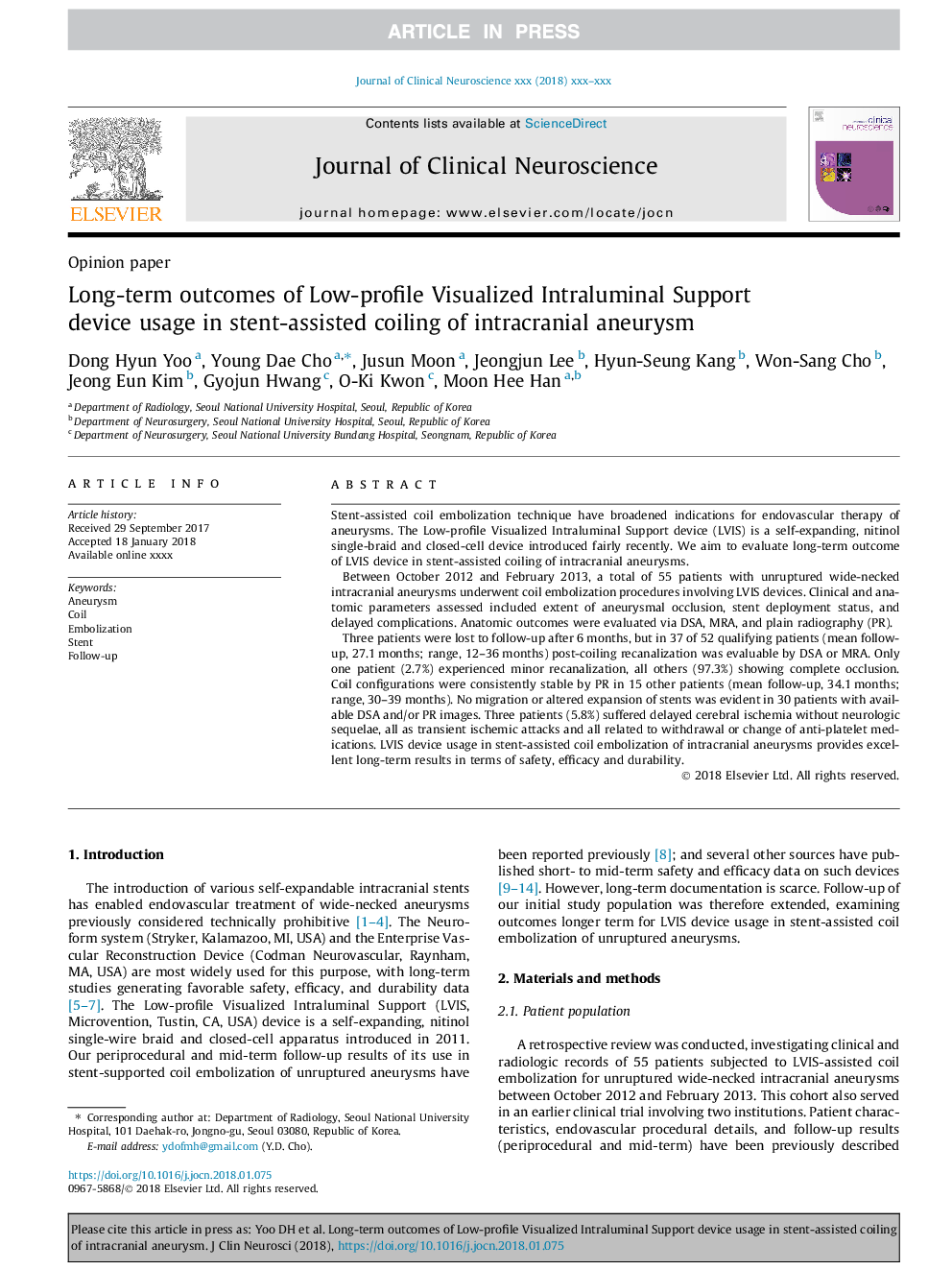| Article ID | Journal | Published Year | Pages | File Type |
|---|---|---|---|---|
| 8685229 | Journal of Clinical Neuroscience | 2018 | 5 Pages |
Abstract
Three patients were lost to follow-up after 6â¯months, but in 37 of 52 qualifying patients (mean follow-up, 27.1â¯months; range, 12-36â¯months) post-coiling recanalization was evaluable by DSA or MRA. Only one patient (2.7%) experienced minor recanalization, all others (97.3%) showing complete occlusion. Coil configurations were consistently stable by PR in 15 other patients (mean follow-up, 34.1â¯months; range, 30-39â¯months). No migration or altered expansion of stents was evident in 30 patients with available DSA and/or PR images. Three patients (5.8%) suffered delayed cerebral ischemia without neurologic sequelae, all as transient ischemic attacks and all related to withdrawal or change of anti-platelet medications. LVIS device usage in stent-assisted coil embolization of intracranial aneurysms provides excellent long-term results in terms of safety, efficacy and durability.
Related Topics
Life Sciences
Neuroscience
Neurology
Authors
Dong Hyun Yoo, Young Dae Cho, Jusun Moon, Jeongjun Lee, Hyun-Seung Kang, Won-Sang Cho, Jeong Eun Kim, Gyojun Hwang, O-Ki Kwon, Moon Hee Han,
